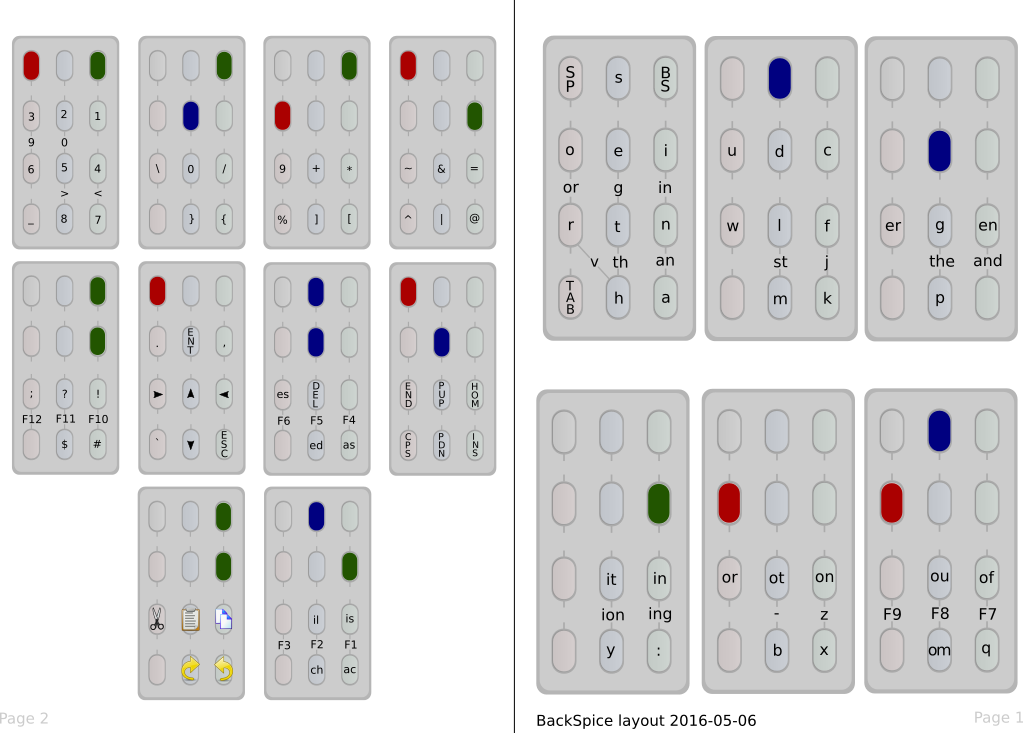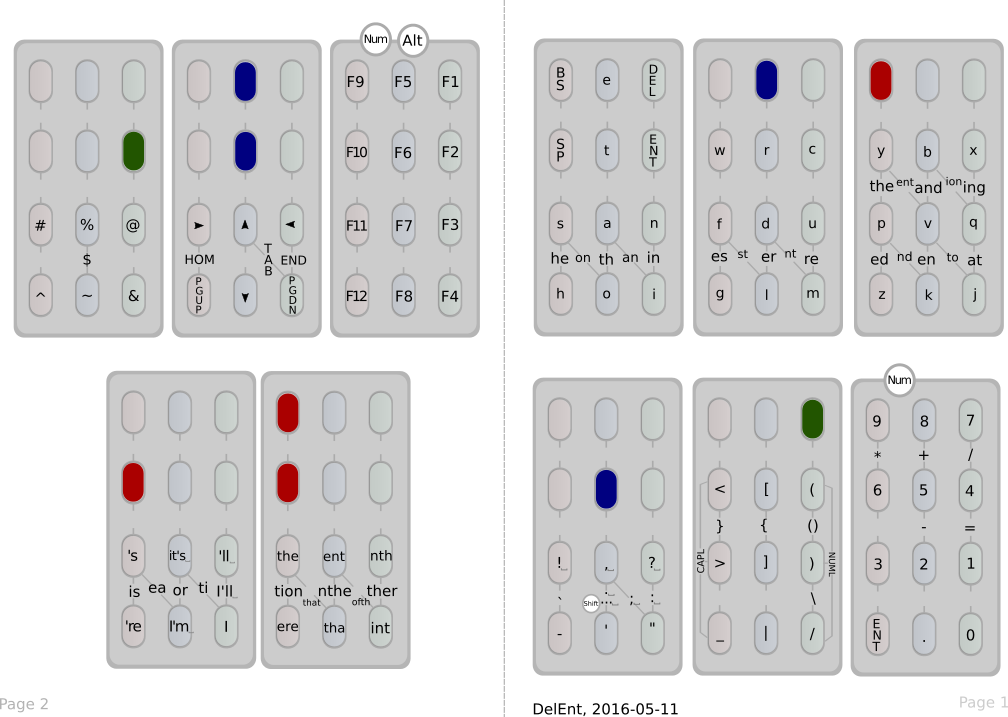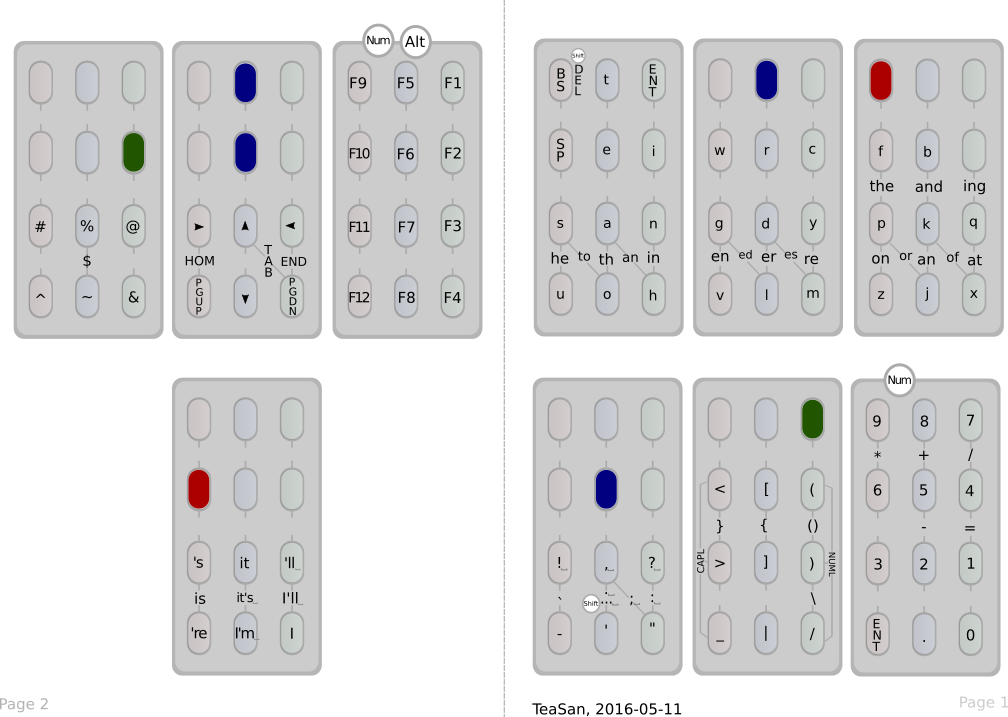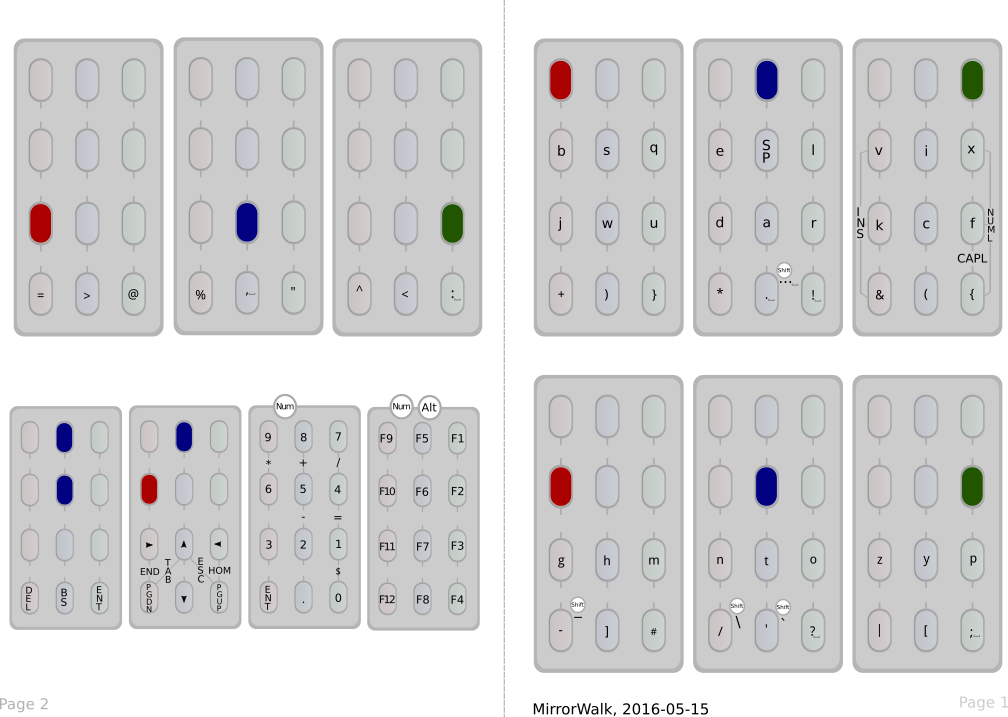This repo holds my Twiddler3 keyboard config file as well as cheat sheets for some different Twiddler3 key configs listed below. Each is exemplified by the first block from their cheat sheet. Hope the sheets are useful to someone!
This is the default keyboard layout coming with the Twiddler since 20 years or so. Its letters are ordered alphabetically which makes it pretty easy to learn while maybe being less than optimal for touch-typing (but then again, neither is querty). It is widely used.
This custom layout was made by Brandon Rhodes in 1999 and changes the default in many ways. Notably it optimizes the letter distribution for how often they are used in English. It centers around using the index finger as a common qualifier and moves the TAB key to make the layout more useful for a programmer/terminal user. This is a popular alternative, even linked to from the Twiddler documentation. Brandon discusses the layout and its ideas at length in this PDF.
User Alex Bravo started from TabSpace some years ago and made his own modifications until the two shared little resemblance. He apparently uses backspice every day to good results. The cheat sheet is for the "full" backspice layout rather than the "simplified" one without the N-grams. You can get the latest backspice config and read more information at his github reposity. Note that there may still be changes happening to the config, at which point this sheet may not be completely accurate.
These were my first own keyboard layouts. They were made by starting from an empty key layout (so not from TabSpace or Default) and ordering the letters by frequency. From the original DelEnt I soon moved on to TeaSan which reshuffled the letters futher to subjectively fit what felt best for my hand. I also found that DelEnt was too heavy on my pinky, so this moved i and n up a bit. I also removed a lot of N-grams and clustered them more logically.
This is my current layout, based on the impressive "walking" layout described by Bill Horner. This works very differently from the ones above. Notably every chord involves at least two fingers. There are no single-finger chords. The brilliance of this is that Mr. Horner calculated the transitions between keys (finding a placement where he claims 65% of the included N-grams can be traversed in a "walk", where you either let the last key in one chord be the first key in the next, or where you can keep one finger fixed why only moving the other. This requires a bit of extra gymnastics originally, since you, to be most efficient need to consider the next chord you want to reach in order to release/hold the right finger. The result is a very interesting type of chording that only uses your strongest three fingers for all letters, leaving the pinky to only handle special characters and punctuation.
Bill Horner lays out the walking scheme in his repo but doesn't include a full config. My "mirrorwalk" config takes his calculated chord scheme and adds all the needed keys like return/backspace, arrows etc in logical places. It also moves around the punctuation and other keys in ways that makes the scheme more consistent to me.
I have updated the mirrorwalk config with additional single-key letters
for handling some cross-situations when the walk fails between certain keys.
It's recommended to learn the walk with mirrorwalk_nomcc first and really
learn the walk since if you can do the walk it's faster than releasing
the finger to press the few single-finger chord letters available in my
latest version of mirrorwalk.
This is an empty SVG template I start from when planning out a new layout. It's quite nice for making/presenting your own Twiddler config in a nice way. It's meant to be printed and folded once or twice so you can to carry it with you for easy reference.
The template and all cheat-sheets were created in the OSS program Inkscape. The sheets are in color but the colors are chosen such that they will present very clearly also in black&white. Use as you please!
The PDFs I made are ISO A4 format. If you prefer another paper format, you can always change the document type of the corresponding SVGs in Inkscape and print that.






